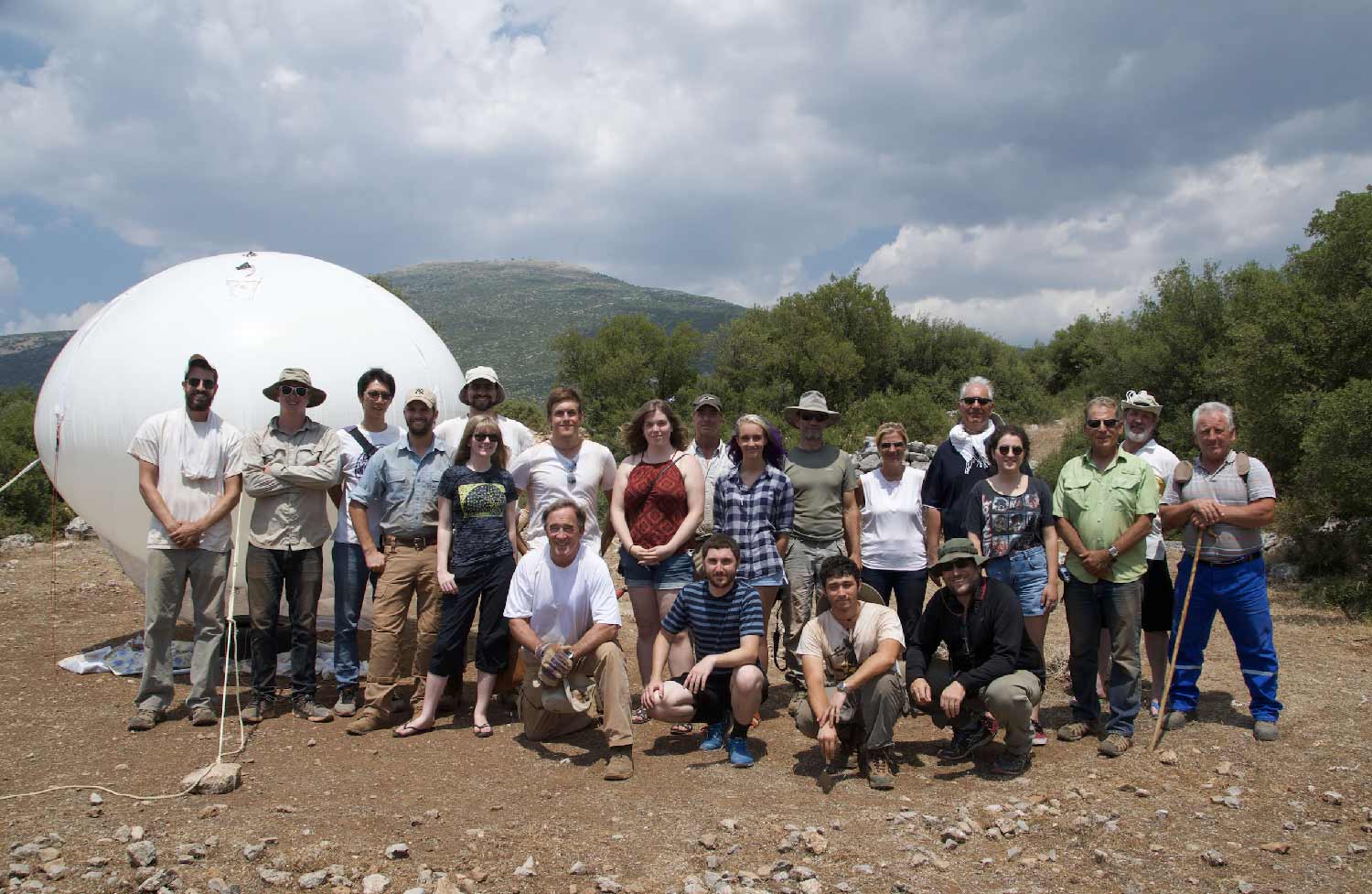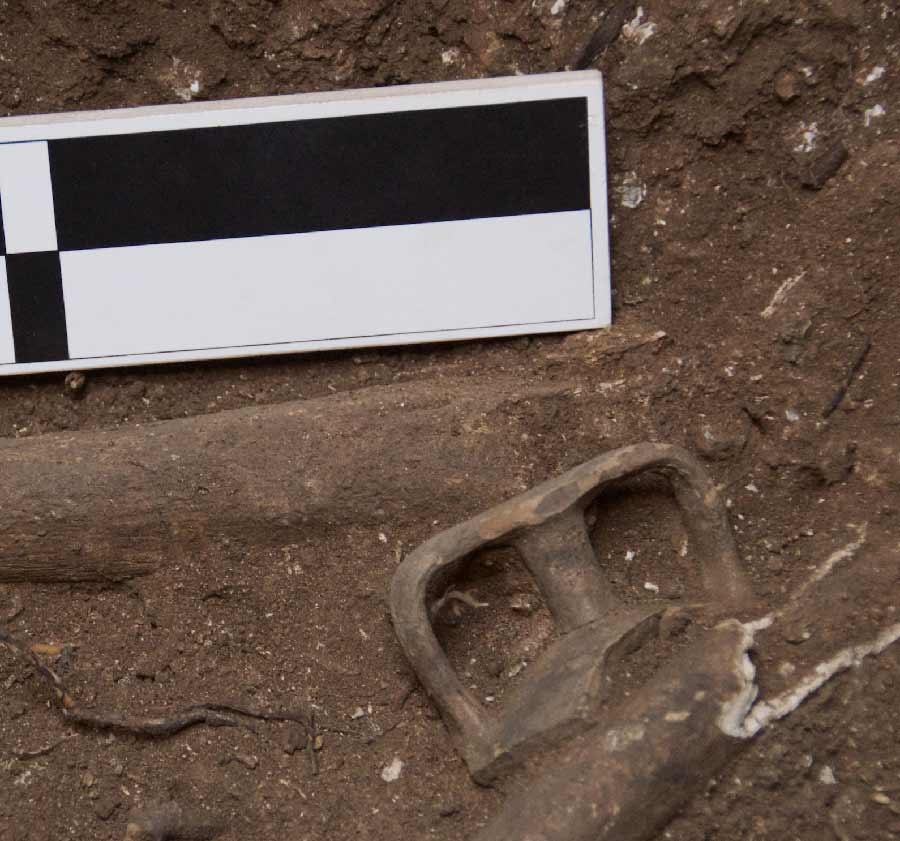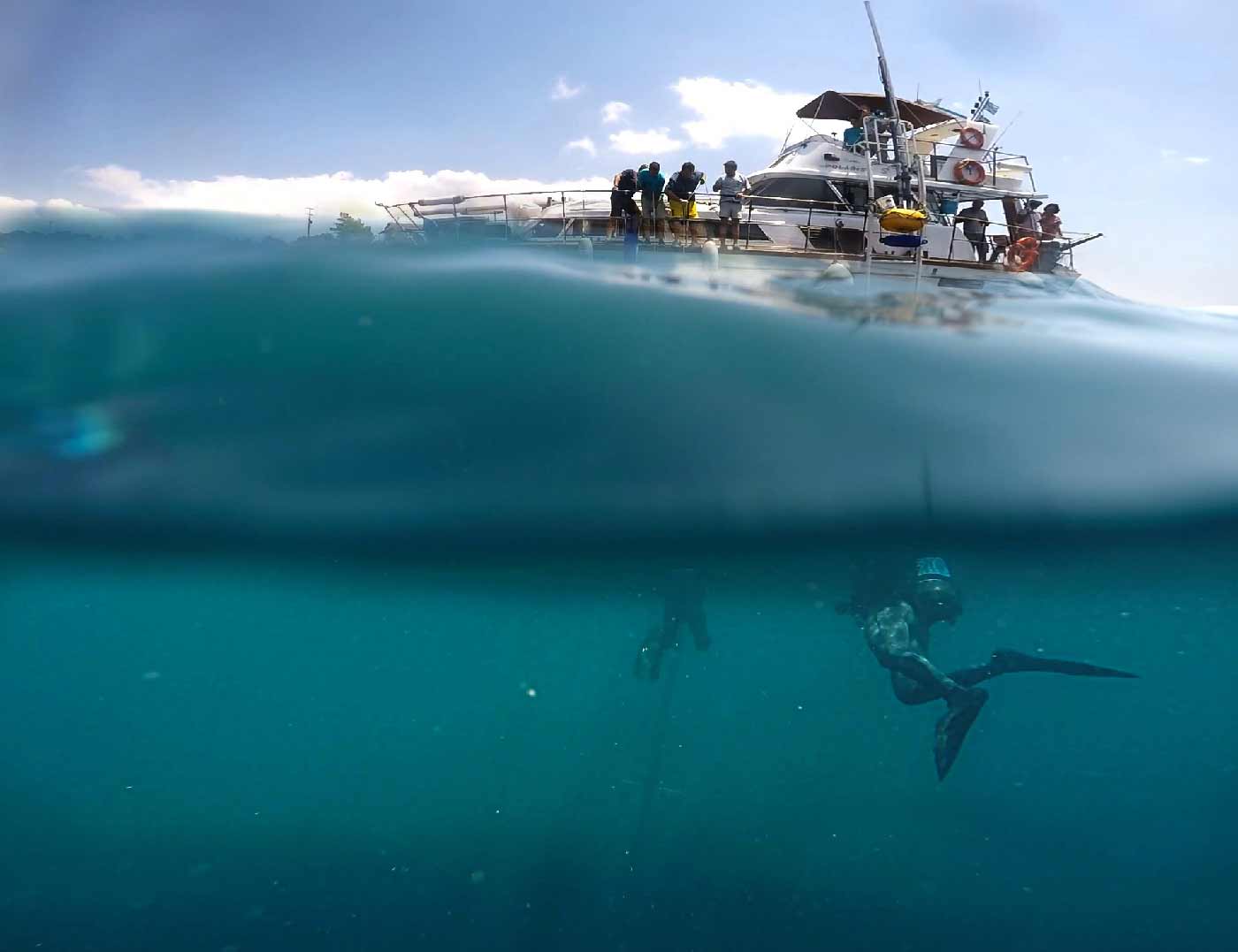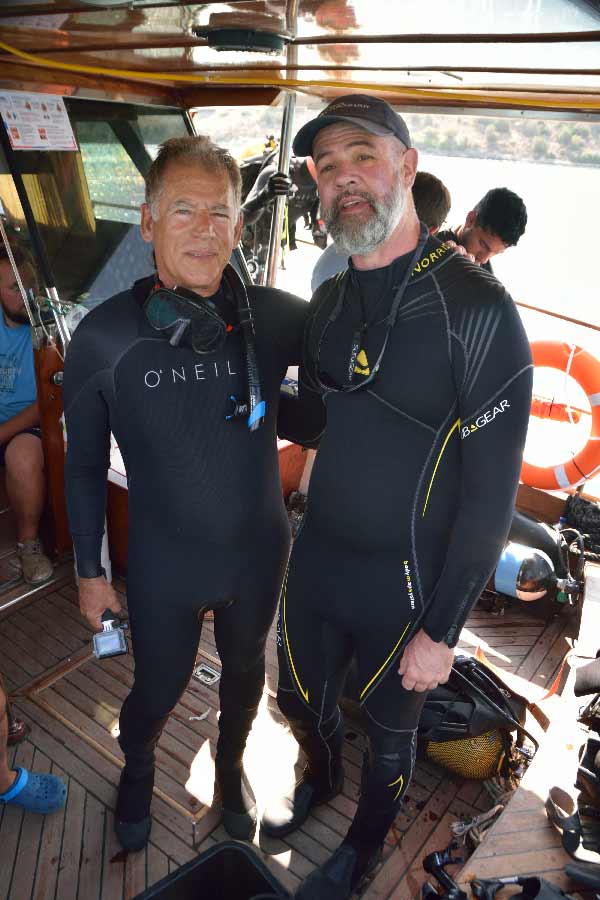UC San Diego Researchers Discover Human Burials and Artifacts in Ancient Mycenaean Tomb
Published Date
By:
- Tiffany Fox
Share This:
Article Content

The Kastrouli excavation team
San Diego, Calif., May 17, 2017 — Researchers excavating what was believed to be a completely looted ancient Greek tomb have discovered 15 adult and two juvenile human burials, as well as artifacts dated to a period just before the collapse of Mycenaean society during the late Bronze Age.

Part of a Mycenaean stirrup jar found with human remains. Photos courtesy of Thomas Levy.
The discovery was made at the site of an ancient village called Kastrouli by a team of archaeologists led by University of California San Diego Professor of Anthropology, Thomas E. Levy. Levy, who directs the Center for Cyber-Archaeology and Sustainability (CCAS) at the University’s Qualcomm Institute, was joined by Prof. Ioannis Liritizis and Dr. Thanos Sideris, both of the University of the Aegean, as well as several graduate students from UC San Diego. The expedition was funded, in part, through a grant from the UC Office of the President Catalyst grant for 'At-Risk World Heritage and the Digital Humanities', the Potamianos Family and the Kershaw Family Foundation.
Although international trade during the Late Bronze Age is relatively well-understood by archaeologists, little is known about the mysterious smaller “Mycenaean worlds” – the integrated land and sea systems that joined the entire fabric of Mycenaean civilization from around 1500-1015 BCE. Many of the legendary places referred to in The Iliad and The Odyssey were actual Mycenaean sites, including Troy, Mycenae and Pylos.
Located on a rocky hilltop near Phokis, Greece, halfway between the famous site of Delphi and the Gulf of Corinth, the three-acre region of Kastrouli was known to have several Mycenaean tombs. Levy set out to excavate, record and document the tombs using a cyber-archaeology 'tool-box' created, in part, by his team at CCAS and the Qualcomm Institute. This toolbox included the fully digital archaeological recording system called ArchField, a data interface software that allows for real-time data recording and review in the field. The excavation team also adopted an intensive ‘photo-stitching’ technique called Structure from Motion (SfM) in order to document the site in 3D over the course of excavation, both on the ground and from the air with a helium balloon-based high definition photography system.

Off the coast of Antikyra, Levy and Norris used scuba equipment and a side-scan sonar to map the sea floor, as well as a sub-bottom profiler to measure its depth.
“When we began the excavation of the disturbed tomb, we thought it had been completely looted,” recalled Levy. “However, after digging for three days, we discovered the tomb robbers had not reached the main burial area of the tomb. To our surprise, we found a co-mingled grave with over 10 disarticulated human burials (skeletons that are not fully intact). We also found beautiful Mycenaean pottery vessels called 'stirrup-jars', spindle whorls for weaving, gold foil and more.”
For unknown reasons, Levy noted, the Mycenaeans, Hittites and New Kingdom Egyptian civilizations eventually collapsed at the end of the Late Bronze Age. “Was this due to climate change, environmental factors, warfare, economic troubles?” he mused. “We now understand that Kastrouli had a much more complex social organization that we thought. There were obviously high-ranking people living at the site right before the collapse. The discovery of imported ceramic vessels and especially gold foil that probably adorned garments worn by Kastrouli elites suggests that this small site played a more complex economic role in the Mycenaean Phokis than previously assumed.”

Thomas E. Levy (left) of the Qualcomm Institute and Dick Norris of the Scripps Institution of Oceanography collected paleo-environmental data concerning climate and environmental change during the late Bronze Age.
Levy also carried out several marine sediment-coring experiments in a number of small bays near the town of Antikyra, teaming up with Prof. George Papatheodorou from Greece’s University of Patras and Prof. Dick Norris of UC San Diego’s Scripps Institution of Oceanography. Their aim was to identify the ancient anchorage that may have served Kastrouli, as well as obtain paleo-environmental data concerning climate and environmental change at the end of the Late Bronze Age. This latter project was the first scientific expedition of the new UC San Diego Scripps Center for Marine Archaeology (SCMA), which Levy co-directs with Prof. John Hildebrand.
“In order to carrying out the research in the Gulf of Corinth, we conducted a geophysical survey of the sea floor using a yacht provided our colleagues at the University of Patras,” Levy said. “We did a side-scan sonar to map the sea floor and sub-bottom profiler to measure the depth of sediments on the sea floor. This helped Dick and I select sites to sample with a coring system he developed. We used scuba equipment and would dive to the selected sample site underwater and then do the coring.
“Once our sediment cores are processed,” he added, “we will have important new information concerning the paleo-environmental conditions during the Late Bronze Age.”
Share This:
You May Also Like
Engineers Take a Closer Look at How a Plant Virus Primes the Immune System to Fight Cancer
Technology & EngineeringStay in the Know
Keep up with all the latest from UC San Diego. Subscribe to the newsletter today.



